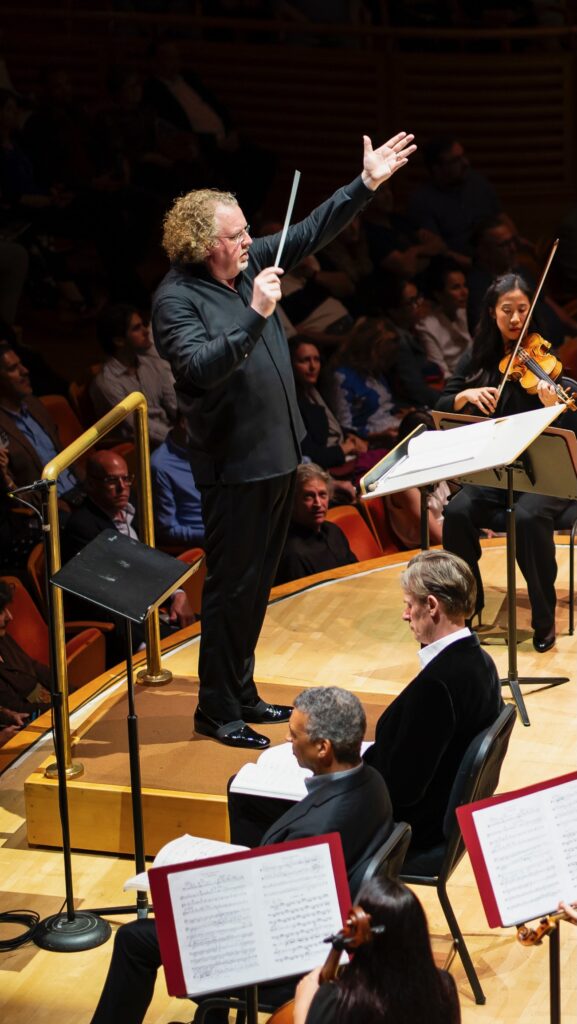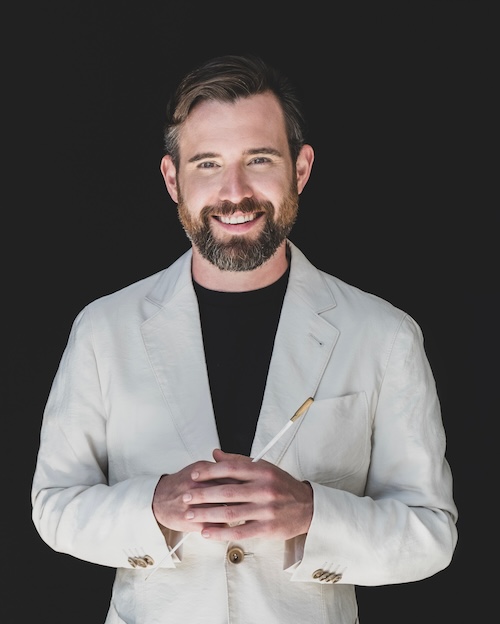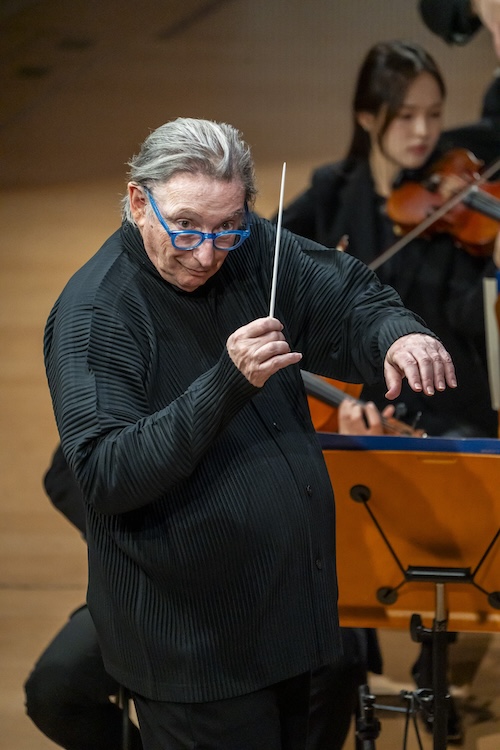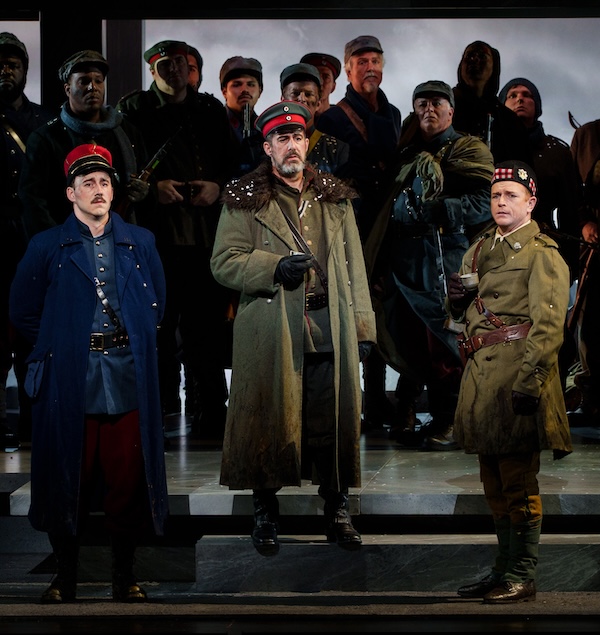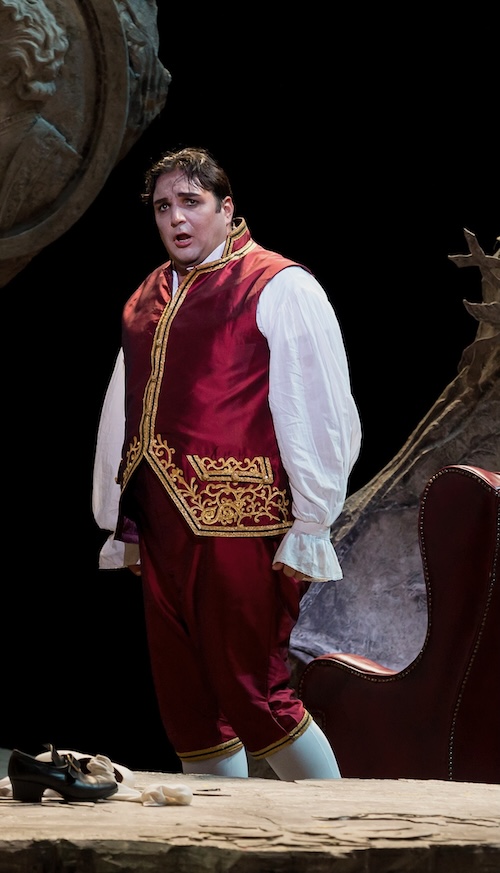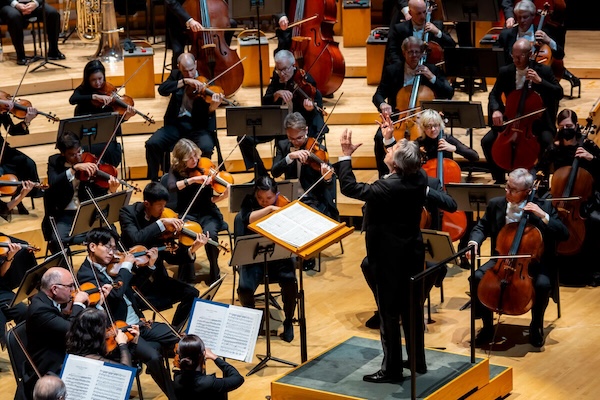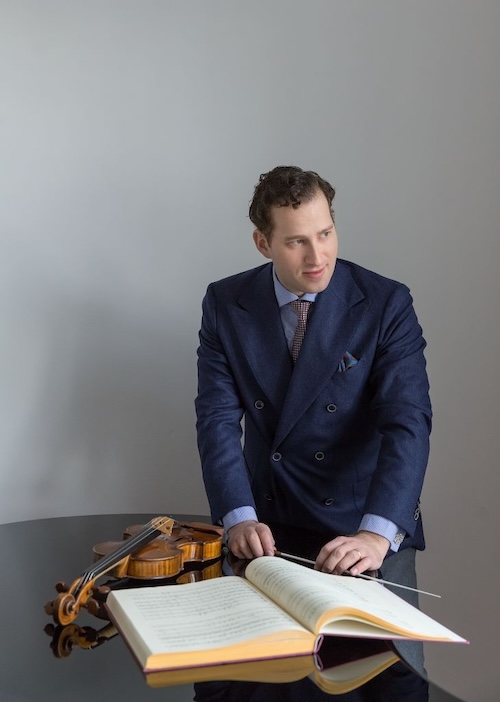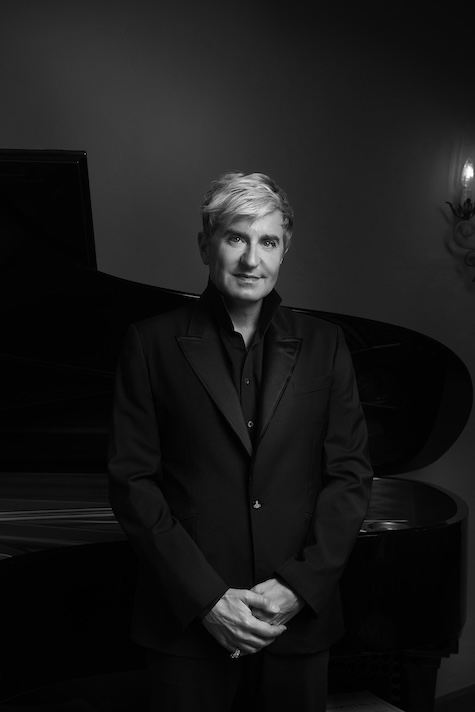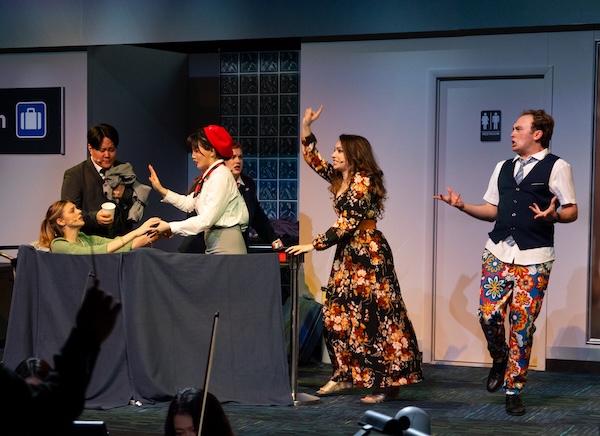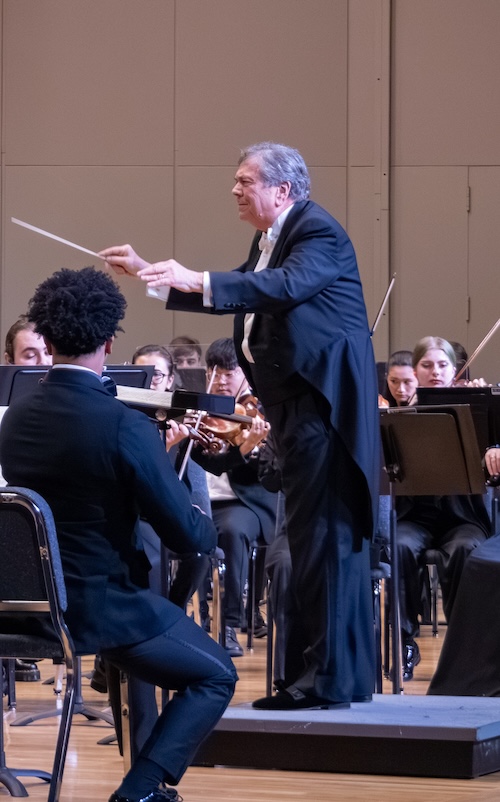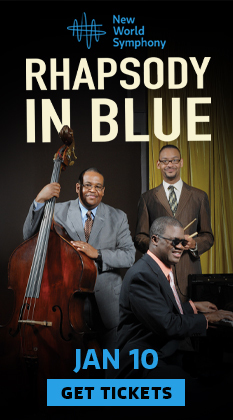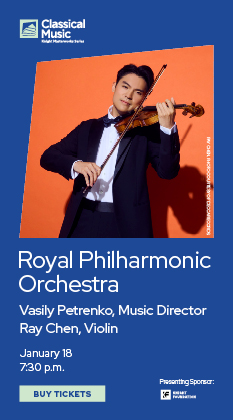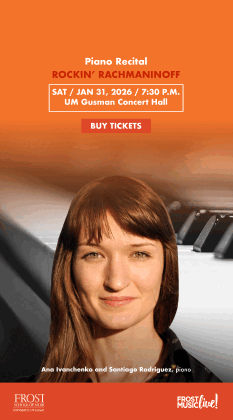Performances
Clarinet works fare best in mixed NWS chamber program
Music of the romantics bookended the New World Symphony’s final chamber […]
Schwarz draws out a variety of colors, lively spirit with Palm Beach Symphony
In 1966 Misha Dichter won the Silver Medal at the Tchaikovsky […]
Honeck returns to New World with witty Haydn and soulful Mahler
Articles
No slowing down for Gerard Schwarz, South Florida’s busiest conductor
When Gerard Schwarz was a teenage trumpet student, he dreamed of […]
The Year in Review
Top Ten Performances of 2025
1. Britten: War Requiem. Stéphane Denève/New World Symphony
Britten’s magnum opus is a sprawling combination of vehement agony and repose that alternates the World War I poems of Wilfred Owen with the traditional mass for the dead. A prime project for New World artistic director Stéphane Denève, the conductor offered an inspired reading in March that captured every nuance and mood swing of Britten’s massive score. The Master Chorale of South Florida (directed by Brett Karlin) sounded full, unified, and resonant as did multiple children’s choruses. A dream trio of soloists—soprano Christine Goerke, tenor Ian Bostridge and baritone Roderick Williams—made superb vocal contributions. A moving and powerful presentation of a unique work. (LB)
2. Bach: Six Motets. Patrick Quigley/Seraphic Fire
Johann Sebastian Bach’s Motets are some of his most original and adventurous creations. These scores have occupied a central place in Patrick Dupre Quigley’s tenure as artistic director of Seraphic Fire. For his first appearance of his final season as principal conductor of the choir, Quigley revisited these compositions for the third time. He produced a performance that was larger in scale, vocally sonorous. voluminous and richer in corporate tone than previous efforts. While bringing interpretive depth to Bach’s inspired pages, Quigley also gave careful attention to contrasts of dynamics and timbres.
Bach has been Quigley’s musical high priest and it was totally appropriate that he offered some of his greatest music in one of his final concerts leading Seraphic Fire. (LB)
3. Beethoven: Symphony No. 5. Michael Tilson Thomas/New World Symphony
For the past several seasons, Michael Tilson Thomas has been heroically battling a severe form of brain cancer. For his final appearance in March with the Miami Beach-based orchestral academy that he co-founded, the conductor concluded with Beethoven’s Symphony No. 5, the most familiar and often-played work in the repertoire (and the symphony that closed the orchestra’s very first concert in 1988).
Tilson Thomas’s ability to make the most standard works sound new and fresh was vividly on display in a performance that fused European warmth with structural firmness. The players (including several New World alums) responded on this important occasion with a resounding, world-class performance. An encore of Grieg’s Last Spring was wistfully beautiful with string playing marked by sweetness and precision. The concert was an apt celebration marking Michael Tilson Thomas’ 37 years of music making in South Florida that changed the area’s cultural landscape. (LB)
4. Puts: Silent Night. Florida Grand Opera
Kevin Puts’ Silent Night is a musically and theatrically striking dramatization of the Christmas truce of 1914 when French, Scottish and German troops ceased the slaughter of World War I to celebrate the holiday together and their common humanity. Kevin Puts’ major arias for the protagonists suggest Menotti and Barber but with a more austere touch. In a uniformly excellent cast, Sarah Joy Miller’s pure, silvery soprano, Kameron Lopreore’s heroic tenor and Elliot Madore’s scene-stealing baritone were standouts. Director Tomer Zvulum’s production captured both the frightening brutality of war and the character’s love of home, nature and country. Conductor Christopher Allen gave full rein to the terror and tenderness at the heart of Puts’ score. A stunning achievement. (LB)
5. Mozart: The Marriage of Figaro. Palm Beach Opera
Sharp-witted stage direction and a troupe of first-rate singers gave South Florida one of the best Mozart opera performances in years with Palm Beach Opera’s The Marriage of Figaro. The Czech bass-baritone Adam Plachetka strode the stage with lordly ease as Figaro, delivering assertive, polished performances of the role’s famous arias. As his fiance Susanna, the soprano Inna Demenkova’s agile, sweet-toned voice gave a fully characterized portrait of a woman using her wits to prevail in a man’s world. Stage director Stephen Lawless distilled the essence of the opera with action that contrasted the idealized formality of court life with the passions and scheming below the surface. (DF)
6. Bellini, Schubert and Tchaikovsky. Riccardo Muti/Chicago Symphony Orchestra
When a great conductor and world-class orchestra assay familiar repertoire, the result can be revelatory. The Chicago Symphony Orchestra and its former music director fused blazing orchestral virtuosity with freshly minted interpretive visions of symphonic standards at the Arsht Center in January. A high-tension account of Bellini’s Overture to Norma, marked by subtle contrasts of dynamics, demonstrated Muti’s operatic bona fides. Schubert’s Symphony No. 8 (“Unfinished”) emerged patrician and unhurried with a vivid sense of drama. Muti drew a myriad variety of colors from the instrumental choirs in a fiery reading of Tchaikovsky’s Symphony No. 4. (LB)
7. Tchaikovsky: Violin Concerto. Nikolaj Szeps-Znaider with Stéphane Denève/New World Symphony
Tchaikovsky’s Violin Concerto is one of the most overplayed works in the repertoire but violinist Nikolaj Szeps Znaider brought mastery of the instrument and musicianship of the most rarified variety to his performance. He succeeded in making this warhorse sound new and exciting. Replete with fiery abandon and vitality, Znaider’s performance was supported by Denève’s perfectly judged accompaniment. An encore of Jascha Heifetz’s transcription of Manuel Ponce’s Estrellita was a tribute from one great violinist to another. (LB)
8. Ravel: Piano Concerto in G. Jean-Yves Thibaudet, Gerard Schwarz/Palm Beach Symphony
The year-by-year improvement of the Palm Beach Symphony has been one reward of its recent concert seasons. Another has been the parade of top soloists. For Ravel’s Piano Concerto in G, the orchestra was joined by the French Ravel specialist Jean-Yves Thibaudet who gave a deeply engaged, richly colored performance. In the outer movements, his touch at the keyboard produced spiky, jazzy riffs and butter-smooth runs. But this season’s highlight was the central Adagio, where his intense, songlike performance joined lustrous and expressive work by the orchestra’s wind players for an interlude of hypnotic lyricism. (DF)
9. Dove: Flight. Frost Opera Theater
British composer Jonathan Dove’s 1998 airport opera is a tightly wound drama about stranded passengers and a displaced refugee. Jeffrey Marc Buchman’s briskly paced staging for First Opera Theater pointed up the light and dark elements of the tense drama in February. Yun Cao led the Frost Symphony Orchestra in a brilliantly performance that brought out the best in Dove’s busy score. In a star turn, mezzo-soprano Lauren Richards made the Refugee’s plight strongly felt and Congcong’s gleaming timbre and stunning coloratura leaps personified the Flight Comptroller. (LB)
10. Stravinsky: Firebird Suite (1911). Gerard Schwarz/Frost Symphony Orchestra
Playing the infrequently heard 1911 Suite from Stravinsky’s The Firebird, which harkens back to the lavish scoring of the original ballet, Gerard Schwarz drew a performance from the student players that was fully on a professional level. The winds were especially distinctive and the passages of lugubrious Russian nostalgia resounded in rounded, lustrous string sonorities. Schwarz’s ear for instrumental colors and individual timbres was fully evident in an exciting performance of Stravinsky’s first significant opus. (LB)
Honorable Mentions
Finnish-Ukrainian conductor Dalia Stasevska made an auspicious New World Symphony debut in April leading an all Sibelius concert that recreated a program that the Finnish composer conducted in Helsinki in 1911. The too-rarely-heard tone poem Night Ride and Sunrise was played with fervor and conviction. Stasevska illuminated the emotional peaks and valleys of Sibelius’ Symphony No. 4, one of the composer’s most sophisticated and rewarding creations. (LB)
Also at the New World Symphony, Sheku Kanneh-Mason’s riveting Shostakovich Cello Concerto No. 1 under Stéphane Denève; Edward Gardner’s freshly conceived Bartók Concerto for Orchestra and violinist Karen Gomyo’s soaring Bernstein Serenade with Carlos Miguel Prieto.
Patrick Quigley and Seraphic Fire’s revivals of Mozart’s Misa Brevis, Vivaldi’s Magnificat and works by Marriana Martines; the Frost Opera Theater’s intimately scaled version of Gian Carlo Menotti’s The Consul; Daniel Harding conducting the Cleveland Orchestra in Holst’s The Planets; Sir Antonio Pappano leading the London Symphony Orchestra in Elgar’s Enigma Variations Hilary Hahn’s Brahms Violin Concerto with a revitalized National Symphony Orchestra under Gianandrea Noseda; the Dover Quartet’s Janaček-Dvořák-Tchaikovsky program; Clarinetist Alexander Fiterstein and pianist Asiya Korepanova’s Brahms Clarinet Sonatas; Ilya Itin’s Beethoven Concerto No. 4 and Alexander Gavrylyuk’s Grieg Concerto, and Ariel Moon’s Scriabin, Rachmaninoff, Chopin and Satie for the Miami International Piano Festival. (LB)
Palm Beach Opera’s production of Gounod’s Romeo et Juliette with an affecting, virtuoso performance by the soprano Kathryn Lewek. The Palm Beach Symphony’s dramatic, stirring performance of Mahler’s Symphony No. 1. (DF)
Dishonorable Mention
Maria Todaro’s production of Bizet’s Carmen for Florida Grand Opera, set in the Spanish Civil War era, exulted in gratuitous violence. From a mass execution at the initial sounding of the orchestral fate motive to a final drowning of the heroine, the staging took more than a few liberties with the original scenario. Just as bad was the cavavlier approach to Bizet’s score, with severely cut or wholly omitted crucial numbers while adding a vocal-guitar flamenco dance sequence in mid-opera. (LB)
Best New Works
Composer Anna Clyne’s PALETTE – Concerto for Augmented Orchestra ambitiously mixed electronics that altered the instrumental sound an octave lower or higher in real-time sans pre-recorded tape. Aided by projections of seven paintings by the composer, the audio-visual panorama managed to delight the eye and ear. The New World Symphony under Denève matched Clyne’s technicolor soundscape. (LB)
Pulitzer Prize winner Paul Moravec’s Miami Variations took a four-note theme on a ten-minute journey through lustrous string writing, angular wind episodes, brass fanfares and a contrapuntal sequence to a stirring conclusion. Moravec’s simplicity of means, skillfully deployed, produced a compelling result. Gerard Schwarz led the Frost Symphony Orchestra in a fully polished reading. (LB)
Best Revivals
The New World Symphony revived several exceptional orchestral and chamber scores. The Negro Folk Symphony, written in 1934 by William Levi Dawson (1889-1990) is a major achievement. Dawson’s thematic invention and deftly conceived orchestration is on a masterful level. Jeri-Lynn Johnson led an idiomatically fluent, invigorating and nuanced performance.
Arnold Schoenberg’s A Survivor from Warsaw remains a jolt to the senses in its depiction of mass murder and terror. Anthony Michaels-Moore was an eloquent narrator in this New World Symphony performance. The men of the Master Chorale of South Florida sang the Shena, a prayer of final words before death, in full and vociferous tones. Conductor Anja Bihlmaier made every 12-tone clash register with potent immediacy.
Louise Farrenc (1804-1875) wrote a sizable catalogue of works that combined thematic felicity similar to Mendelssohn with Gallic verve. Farrenc’s Nonet in E-flat Major, a bright divertissement filled with elegant and tuneful melodies, brought out the best from an ensemble of New World string and wind players.
David Diamond was one of America’s finest composers. His 1937 Quintet in B minor for flute, piano and strings is a neo-classical gem that manages to pack a plethora of invention into 13 minutes. (LB)
Award for Promotion of American Music
Gerard Schwarz, music director of the Palm Beach Symphony. In just seven concerts this year, the orchestra performed works by Paul Creston, Gabriela Lena Frank, George Gershwin, Howard Hanson, Jennifer Higdon, Alan Hovhaness and William Grant Still. This was a bigger haul of American music than provided by most orchestras with seasons three times longer, and Schwarz deftly mixed classic American works by composers such as Gershwin and Hanson with pieces by contemporary composers. (DF)
A Fond Farewell
Alan Johnson retired this past spring after 19 years as music and program director of the University of Miami’s Frost Opera Theater. The opera department was barely visible prior to Johnson’s arrival. Training hundreds of singers, he mounted memorable production that often-reached standards far above the student level.
His devotion to contemporary opera was especially notable. He produced works by Osvaldo Golijiv, Michael Daugherty, Thomas Sleeper and Michael Dellaira as well as rarities of Ravel, Stravinsky and Kurt Weill. Johnson leaves a rich and significant legacy for his successor and frequent collaborator Jeffrey Buchman to build upon. (LB)
Passing the Baton at Seraphic Fire
In October, Patrick Dupre Quigley, founder and artistic director of Seraphic Fire announced that the current season would be his last as the chamber choir’s leader. Starting as a South Miami church choir, Quigley has melded the group into one of the best professional classical choruses in the nation, with Grammy nominations and touring far beyond South Florida. Stellar performances of Baroque and Renaissance music and contemporary choral compositions have been mainstays of Seraphic Fire’s repertoire during Quigley’s 24-year tenure.
Associate conductor James K. Bass, an excellent singer and choir member from the organization’s earliest days, will be Quigley’s successor, beginning with the 2026-2027 season. Bass is an excellent choral conductor, interesting programmer, and a musician of great integrity. The future of one of the area’s most consistently excellent musical organizations is in very good hands. (LB)
Donald Oglesby RIP
Longtime Miami-based choral director Donald Oglesby, 77, passed away in April. As co-founder and artistic director of the Miami Bach Society and a faculty member at the UM Frost School of Music, Oglesby proselytized for Baroque music at a time when it was difficult to draw audiences for that repertoire in South Florida. Oglesby’s performances of Bach’s St. Matthew Passion, Mass in B minor, and many cantatas were usually the first local performances of those works. Combining mostly amateur choruses with professional soloists and orchestral players, Oglesby delivered eloquent, well disciplined performances. He was also an enthusiastic supporter of other arts organizations, and a regular presence in the audience at Seraphic Fire and New World Symphony performances. Oglesby’s contribution to Miami’s cultural life was crucial and path-breaking. He will be missed. (LB)
Posted in Articles
No Comments
Coming Up
December 28
Vienna New Year’s Concert
Strauss Symphony of America
Imre […]
News
Patrick Quigley to depart Seraphic Fire in 2026; James Bass will be his successor
The Seraphic Fire torch is being passed.
Patrick Dupre Quigley, founder […]



